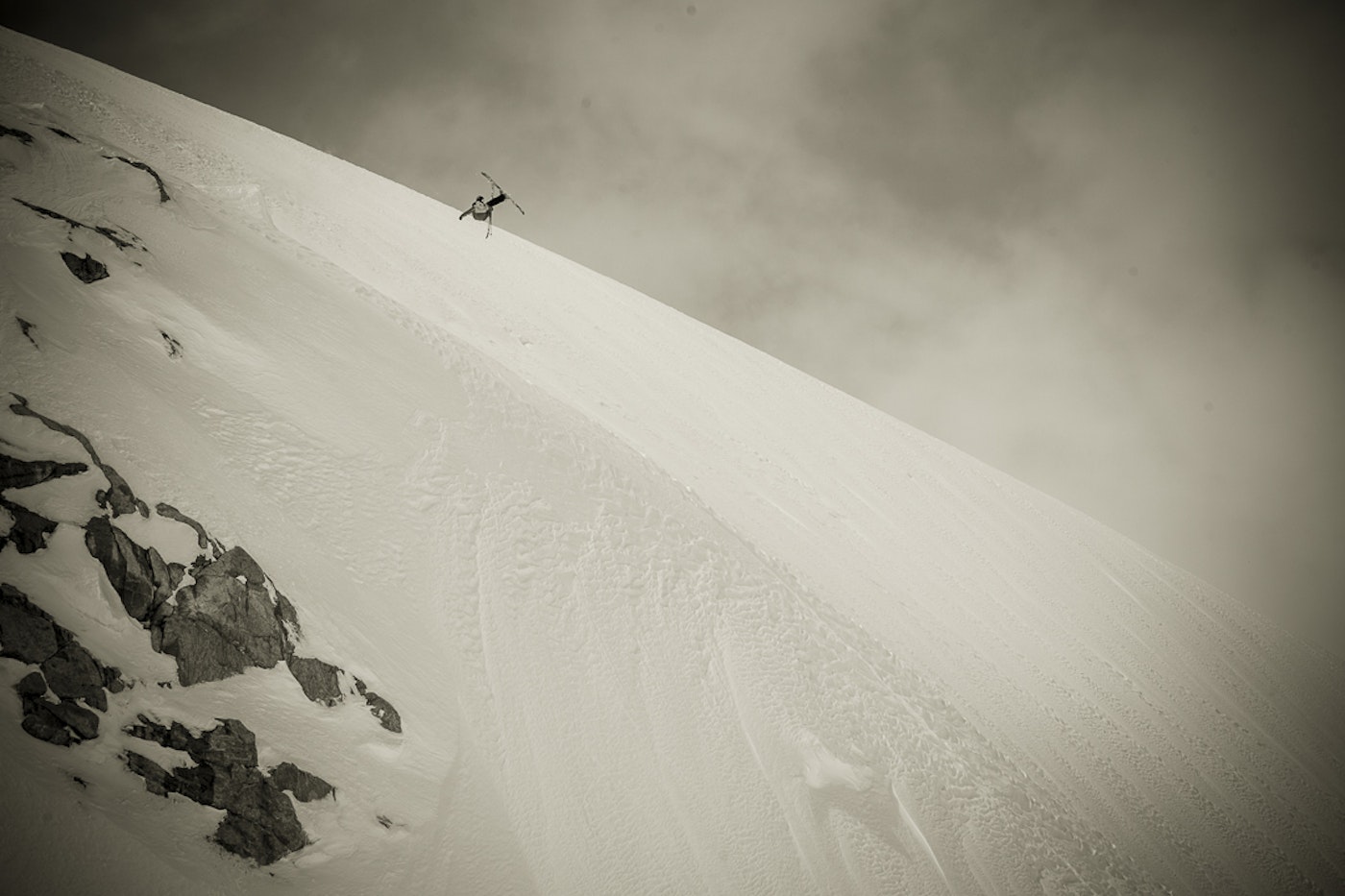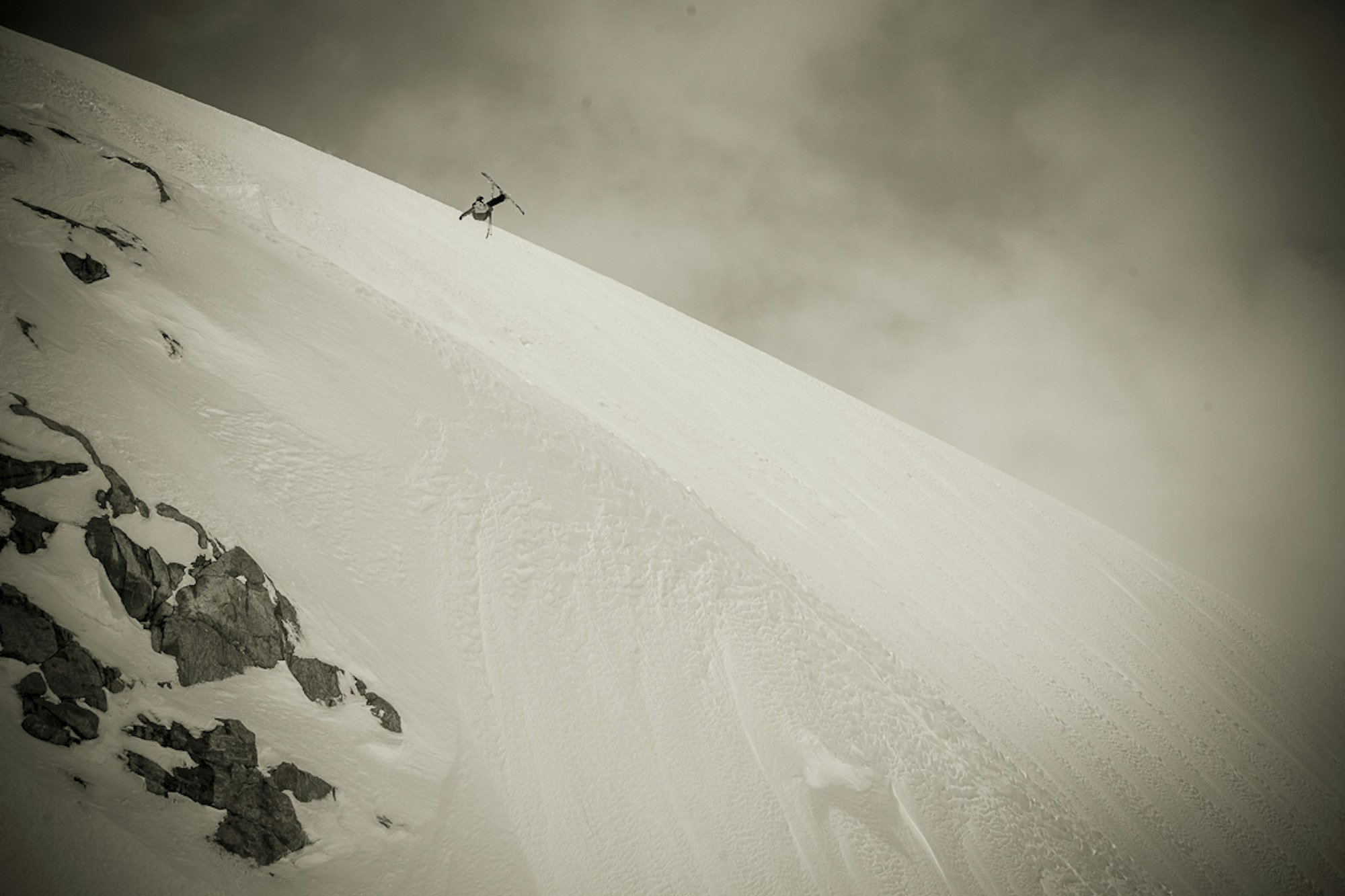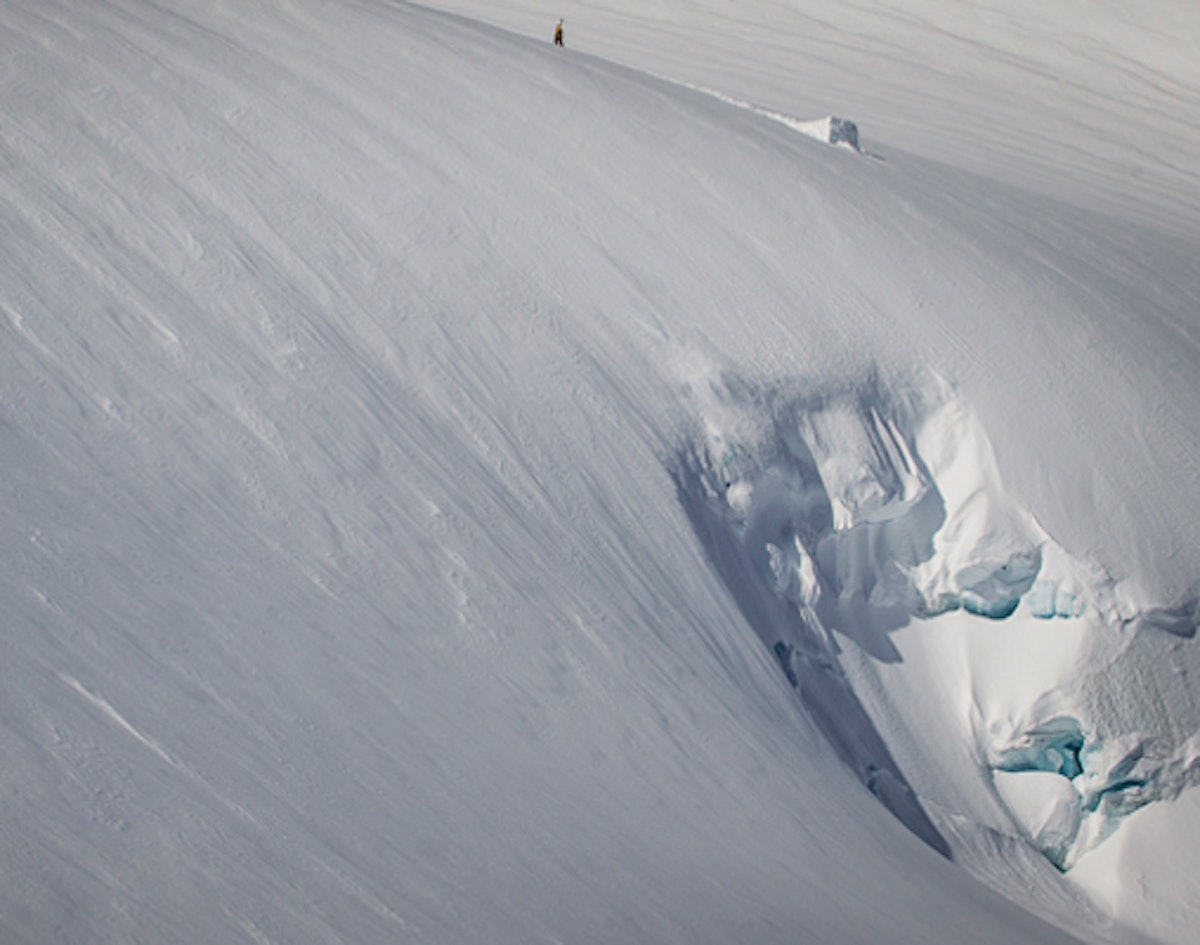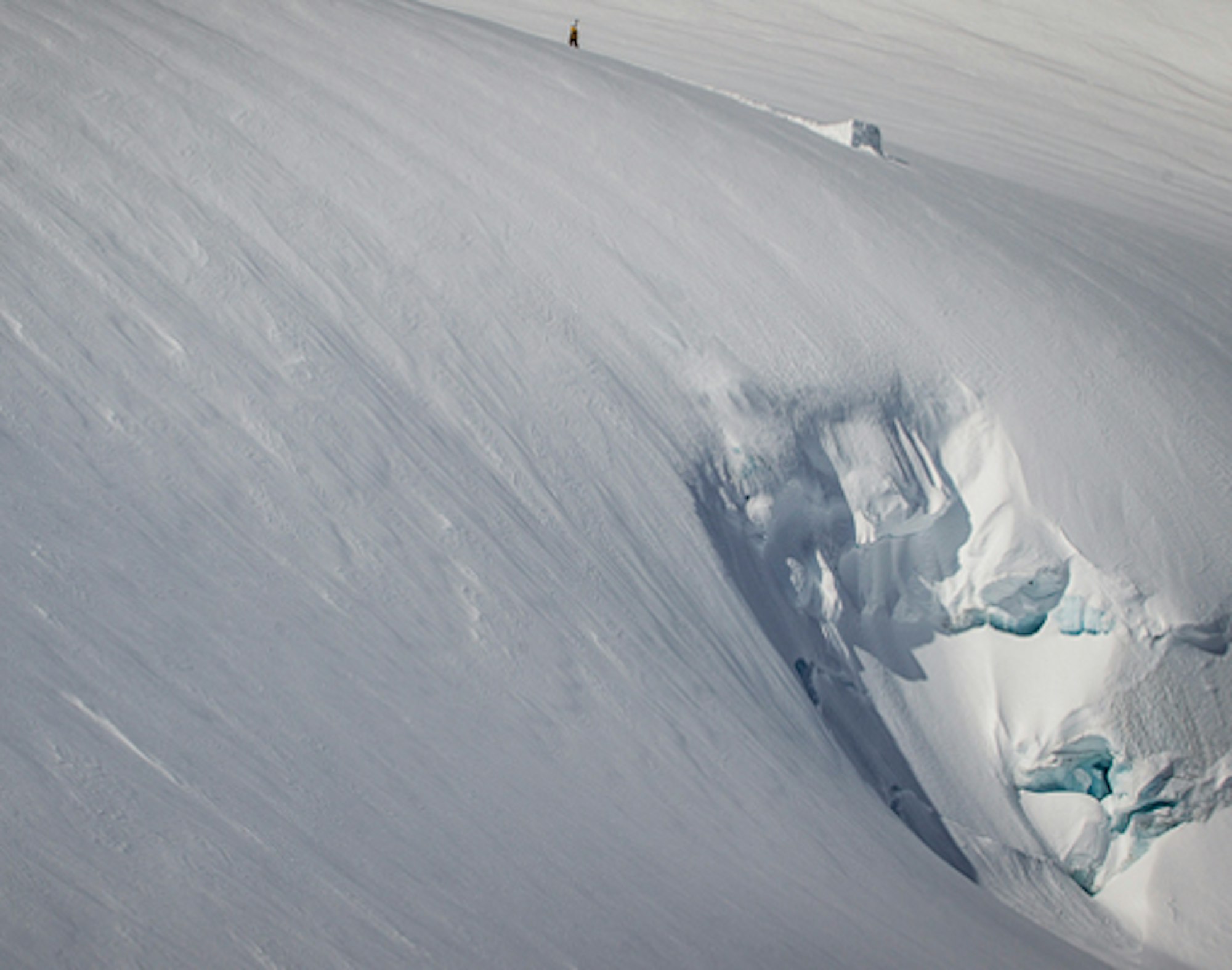So you have been shooting ski photos, getting good results and are thinking of turning it from hobby to profession. Once you get published, the addiction really starts. Seeing your shots in a major publication such as Freeskier, with your credit in print, is a great feeling—that alone can make you want to pursue it full-time. Photography as a career can be challenging, and in a niche market such as skiing you need to be able to make yourself stand out from the competition. And there is a lot of competition. That’s not to scare you away, but rather just to let you know that shooting full-time isn’t a cake walk. But, the rewards can be worth it.
Ski photography is passion work. The lifestyle that goes along with shooting skiing is incredible and addictive, but not always lucrative. I mean, traveling all over the world, with great people, shooting in amazing terrain, embracing other cultures and experiencing hanging out the side of a helicopter shooting a big line all while getting paid is a dream job—but getting there takes years of hard work and dedication, as with any profession you want to excel at.
So if you have decided to go for it, hopefully these 10 key points will help you start on your career path:


Tom Wallisch sends a massive air in the Whistler backcountry. See more of Bryn’s work here.
1. Take a business course. Photography is like any business, and knowing how to run the business is key. The basics of business are necessary tools to be successful. You need to be on top of all business communications from day one: quotes, pricing, accounting, payments, expenses, the list is endless. But if you follow basic business rules, you will be fine.
2. Follow those who inspire you. If you like a certain photographer’s style, follow them through social media and possibly make contact. A lot of photographers in the ski world are very approachable. We are open with sharing our knowledge and experience with others. This isn’t always the case, as there are times where pro photographers are swamped with their hectic schedule. But most, if they have time, will answer some of your questions. A friend who is a top photographer in his field, will travel across the country to attend seminars with photographers that inspire him; he feels it’s the best way to learn how to shoot a specific style and to see what these individuals are all about.
There is a great workshop held in Whistler each year—The Whistler Outdoor Photography Workshops—started by Blake Jorgenson, that has a great list of instructors that will help you with everything you ever wanted to know about action sports photography. I worked with Blake for a few days last year on the workshops, and all the pros were learning off each other, as well as all the students—it’s a great experience. You can check it out here, and for information on the 2013 workshops, follow this link: whistlerphotosummit.com/. There are many great workshops all over North America, so keep your eyes peeled.
3. Create and keep good relations with editors. Editors will have specific requests, and certain ways of wanting photo files sent to them; keep them happy and submit imagery following their submission guidelines. Keep your edits tight. Only show your best work. Remember that they will look through 20,000+ shots—they don’t want to see anything but bangers.
Another thing is metadata: the importance of adding essential info to your photos cannot be understated. It’s time consuming and painful to do, but that’s how editors search for specific shots. No keywords? There’s very little chance they will find your shot.
4. Learn the business of photography, read blogs, watch webinars, read books, learn everything you can from organizing shoots to contracts and pricing. There are a couple of good photo pricing softwares available that are invaluable. You will need to learn how to write a license agreement for your image use, and have everything set up in writing to protect yourself, your image and the client.
Never give up your photos without compensation, and promise of good exposure and photo credit—that is the quickest way to fail in photography. It is a business, you need to bring in cash to make it happen.
5. Keep open communications with clients. If some of your photos have been selected for advertising, make sure you know the exact usage license the client wants, and price accordingly. When you are hired for a commercial shoot, again, you must have all details of the shoot in writing, along with pricing, usage, expenses, etc. This is a very important time to make sure you are on the same page with the client. Make sure you know exactly what they want. You and the client don’t want any surprises. This will be easier with more experience.
6. Self promotion. You need your name and photos out for everyone to see and social media is a great way to do that. Start building up your follower count and stay on top of blog posts, Facebook updates, Instagram, etc. Keep things fresh. Keep your followers interested. Bring them along on your trips and let them in on your days in the mountains. Make sure to separate your business from your personal social media, as you will get a lot of people following you who don’t need to know your personal details. Keep the business side professional.
7. Don’t just shoot skiing. All the top ski photographers shoot many different subjects and all types of shooting will improve your ski photos. You can stick with adventure sports or branch out into any genre. You are a photographer, not to be labeled as just a ski photographer. Being a well rounded photog will open more doors, including more in the ski industry—especially with companies that develop products outside of skiing.
“Learn the business of photography, read blogs, watch webinars, read books, learn everything you can from organizing shoots to contracts and pricing.”
8. Have a diverse portfolio. This sounds simple, but it means more than just photos of your best work in ideal conditions. You need to be confident in shooting in all situations. When a client books you for a contract shoot, you will have limited days to shoot, and weather is always a factor. Learn to shoot great ski action during storms and overcast days. Be confident with shooting strobes, as they can save a shoot when weather doesn’t cooperate. Capture everything during the shoot: lifestyle, portraits, behind the scenes… all of these can help save a shoot when the weather is screwing you.
This also goes for shooting a magazine feature: you have to shoot everything that happens during the trip, not just point and shoot type shots, but thought out and interesting action and lifestyle shots.
9. Communicate with your photographer peers. You can learn a lot from other on-snow photographers; it helps when you are dealing with a new company or magazine, and you want to know other photographers’ experiences with them—this communication can save you a lot of hassle. On-snow photographers are a pretty tight crew, we all talk amongst each other about the industry, and we all learn a lot from each other.
10. Be professional and don’t be an asshole. Seriously. The industry is way too small to burn bridges, and that is the quickest way to end your career. You want people to want to work with you. If you are a dick, you will be pushed aside, and someone that’s happy to be out shooting in the mountains will be hired.
If you look at the top photographers in action sports, they got there through hard work, love of photography and love of the sport, all while making lifelong friends along the way.
Also Read: How to be a moderately successful ski photographer, by Nate Abbott



![[GIVEAWAY] Win a Head-to-Toe Ski Setup from IFSA](https://www.datocms-assets.com/163516/1765920344-ifsa.jpg?w=200&h=200&fit=crop)


![[GIVEAWAY] Win a Legendary Ski Trip with Icelantic's Road to the Rocks](https://www.datocms-assets.com/163516/1765233064-r2r26_freeskier_leaderboard1.jpg?auto=format&w=400&h=300&fit=crop&crop=faces,entropy)




![[GIVEAWAY] Win a Head-to-Toe Ski Setup from IFSA](https://www.datocms-assets.com/163516/1765920344-ifsa.jpg?auto=format&w=400&h=300&fit=crop&crop=faces,entropy)


